Changelog tools have become essential for modern SaaS and product teams to keep users informed, improve transparency, and boost feature adoption. Whether you’re a startup launching fast updates or an enterprise managing complex product rollouts, the right changelog software can streamline communication and increase user engagement.
In this guide, we’ll rank and compare the 10 best changelog software and release notes tools in 2025 - looking at features, pricing, ideal use cases, and how they help drive adoption.
What Are Changelog Tools?
Changelog tools are platforms designed to create, manage, and distribute product updates. They go beyond basic release notes by offering interactive features, user engagement options, and analytics.
Key capabilities include:
- Multi-channel publishing - Email, in-app widgets, and hosted pages
- User engagement features - Comments, reactions, and feedback collection
- Advanced segmentation - Target updates to specific audiences
- Analytics & tracking - Measure engagement and feature adoption
Why Use Changelog Software?
Modern changelog software provides several benefits over traditional methods like blog posts or email newsletters:
- Enhanced Engagement - Interactive elements keep users involved.
- Better Feature Adoption - Targeted updates increase awareness.
- Centralized Communication - All updates in one place.
- Data Insights - Analytics help refine your announcements.
- Brand Consistency - Custom styling keeps updates on-brand.
Our Selection Criteria
We evaluated tools based on:
- Features (AI, automation, integrations)
- Ease of use (setup time, UI)
- Engagement capabilities (reactions, comments, targeting)
- Pricing & value (free plans, scalability)
- Customer feedback (reviews, case studies)
Best Changelog Software & Release Notes Tools in 2025
1. Userorbit
Overview: Userorbit is an all-in-one customer engagement platform combining changelog management, onboarding, feedback, and analytics.
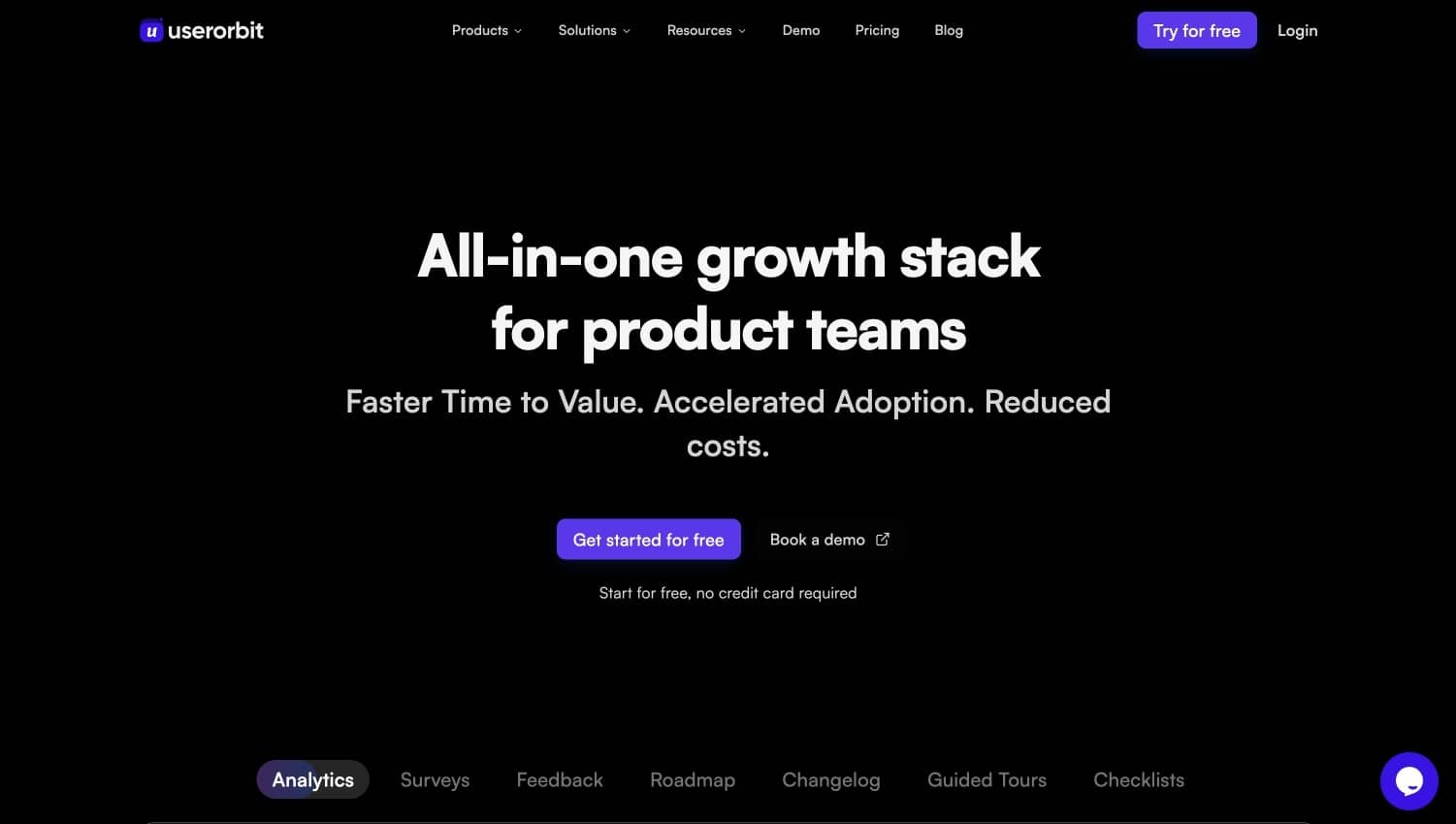
Key Features:
- AI-powered changelog generation in your brand tone
- Integrated product tours and user journey mapping
- Engagement tracking and real-time analytics
- Feedback collection with automated follow-ups
- Custom domains & white-label branding
- Roadmap management and announcements
Best For: Product-led growth teams wanting fewer tools and more integration.
Pricing: Free plan, Starter $99/mo, Pro $249/mo
Getting Started: Free plan includes 500 subscribers, 5 guides, and 50 active announcements.
2. ReleaseNotes.io
Overview: Dedicated changelog tool with automation and multi-channel distribution.
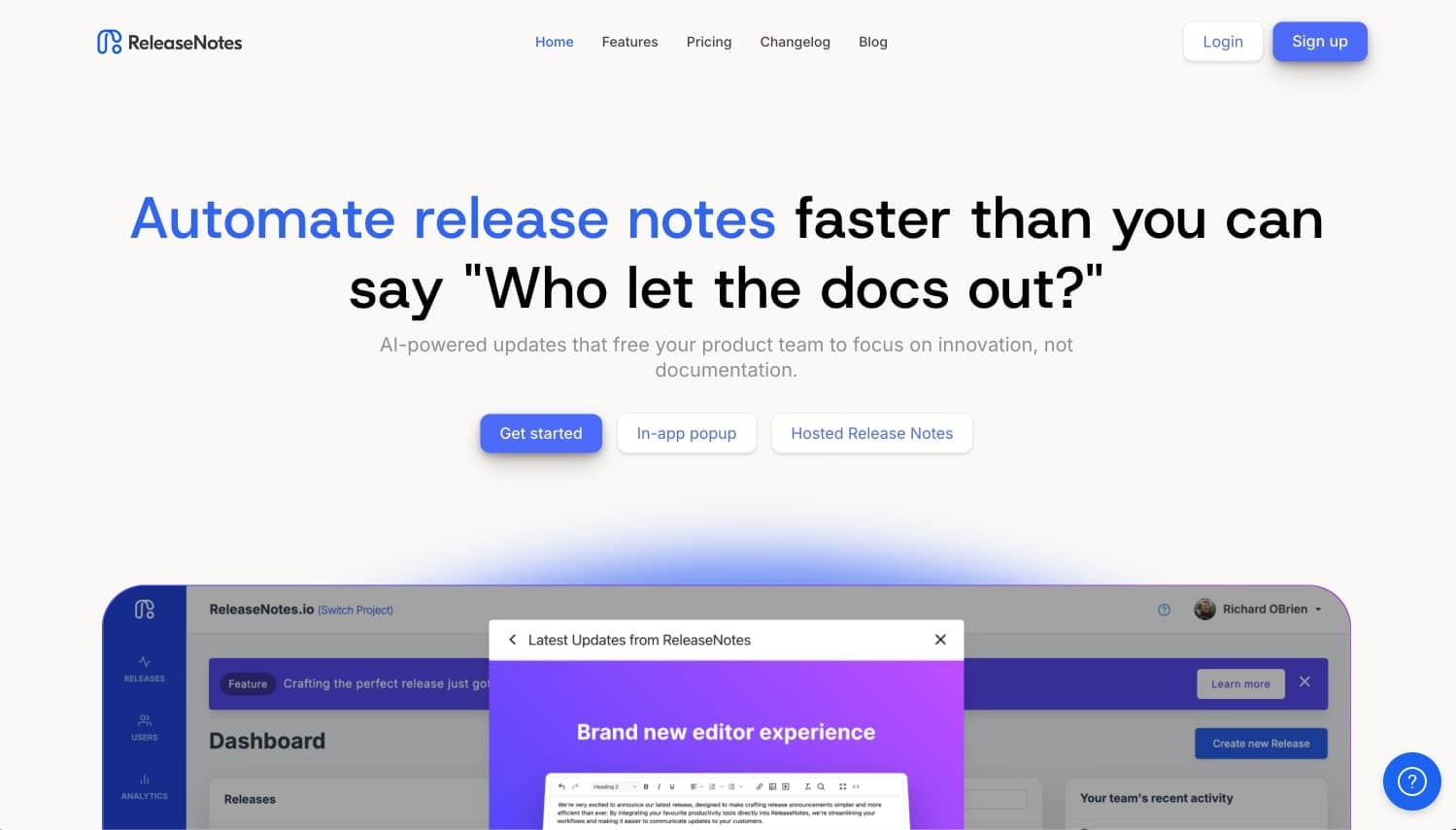
Key Features:
- Automated updates from dev activity
- Embeddable JS widget for in-app notices
- Hosted changelog pages with branding
- Email broadcasting
- User feedback tracking
- API & Zapier integrations
Best For: Teams needing a focused, feature-rich changelog platform.
Pricing: Free plan, Standard $29/mo, Pro $49/mo (+$10 per 1k subscribers)
3. ProductLift
Overview: Integrates feedback, roadmap, and changelog with AI automation.
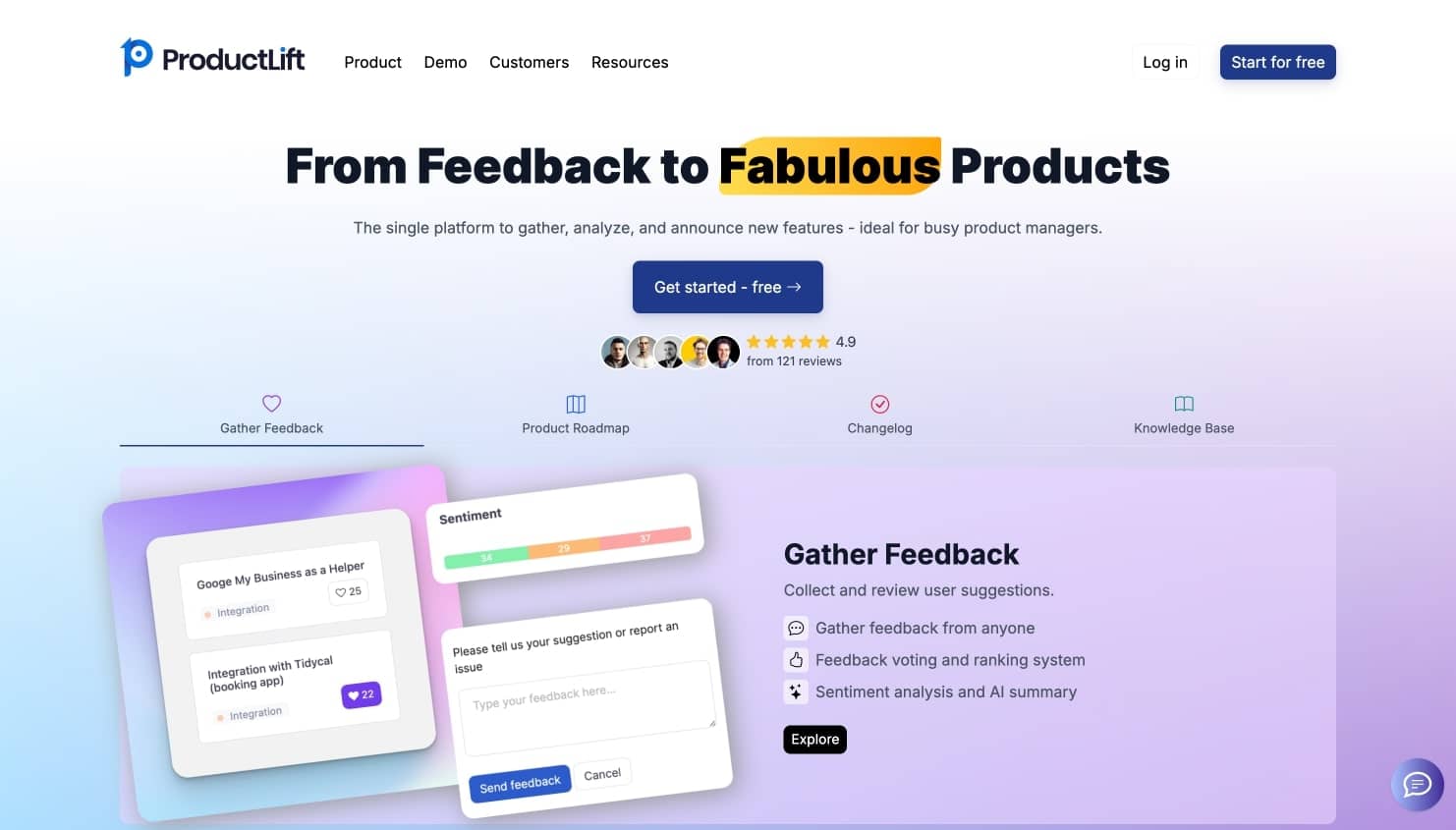
Key Features:
- Unified feedback → roadmap → changelog flow
- AI-generated updates from roadmap items
- Custom branding and domain
- No-login embedded widgets
- Multi-channel notifications
- Version control & collaboration
Best For: Mostly no one as this tools looks unmaintained and not good.
Pricing: From $22/mo
4. Notion
Overview: Flexible workspace tool adaptable for changelogs.
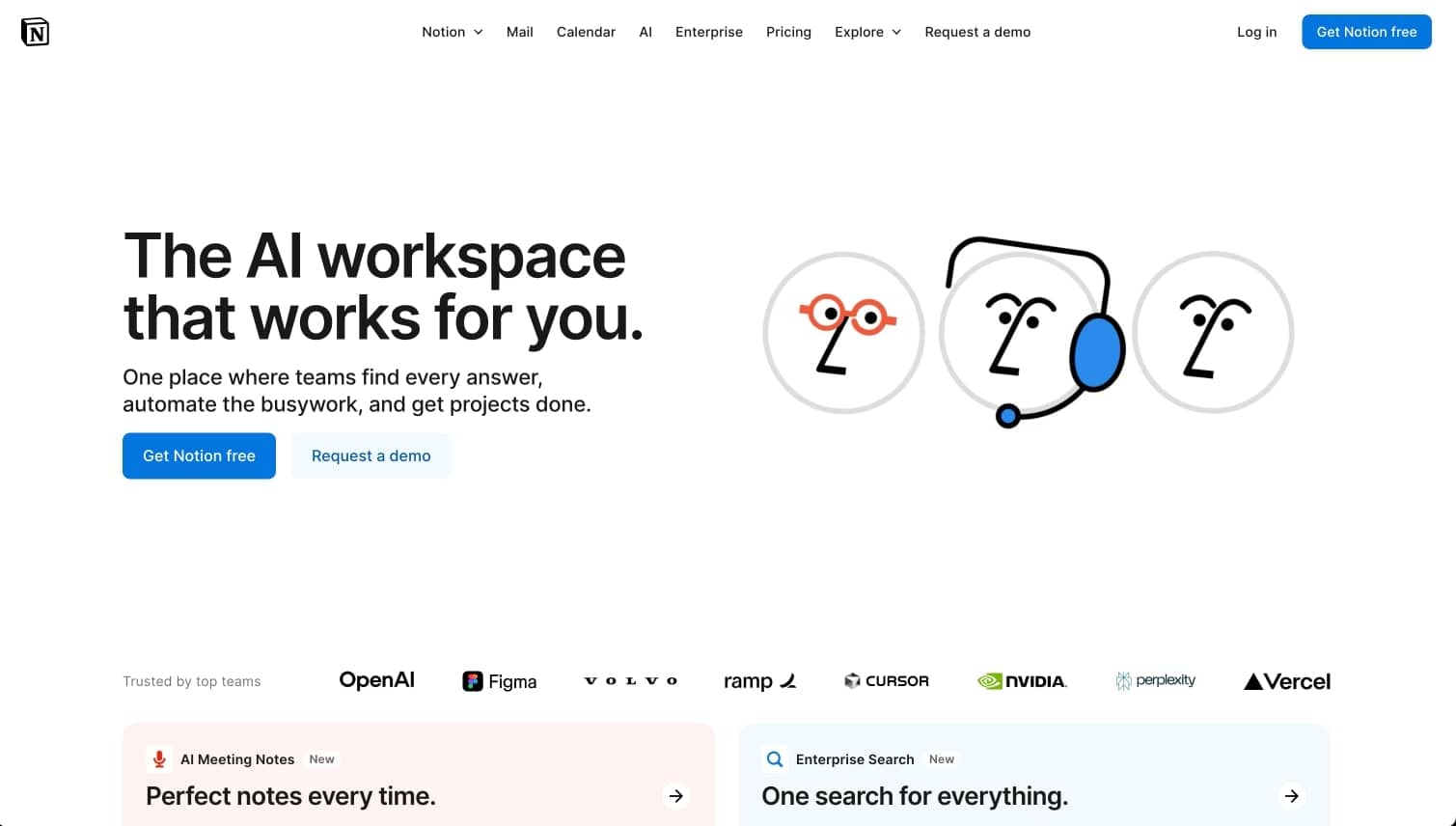
Key Features:
- Database-driven changelog tracking
- GPT-5 AI content generation
- Custom templates & automation
- Media embedding & interactive elements
- Public sharing with branding
- Native feed view
Best For: Teams already using Notion for docs/project management.
Pricing: Free plan, Plus $8/user/mo, Business $15/user/mo
5. Canny
Overview: Full feedback loop with integrated changelog and roadmap.
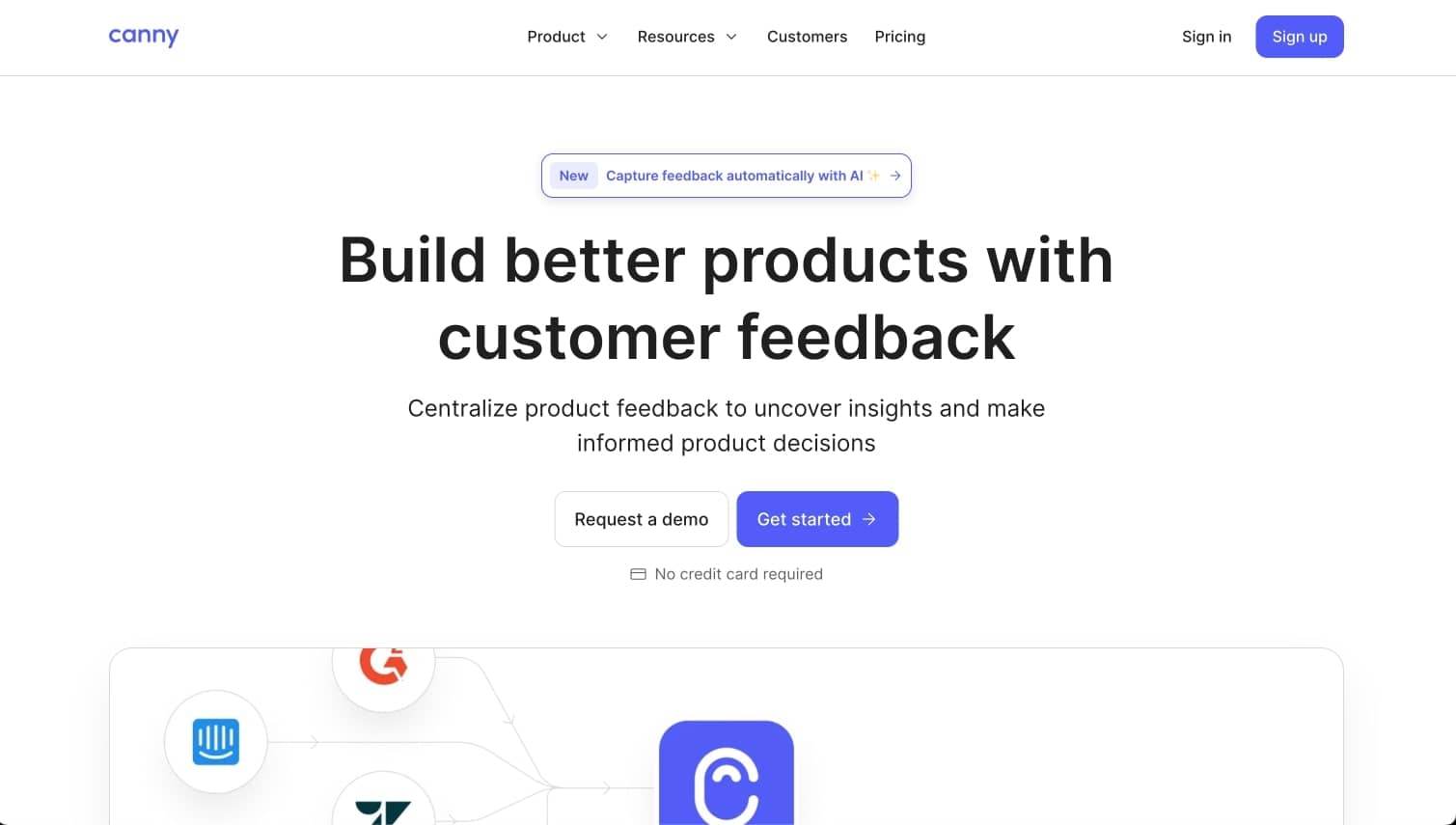
Key Features:
- Markdown-supported changelog
- Automatic email notifications
- Feedback + roadmap integration
- Custom labels & filtering
- In-app widget and standalone page
- Targeted messaging
Best For: Feedback-heavy teams.
Pricing: Free plan, Growth $360/mo
6. Beamer
Overview: Strong user engagement with multi-channel announcements.
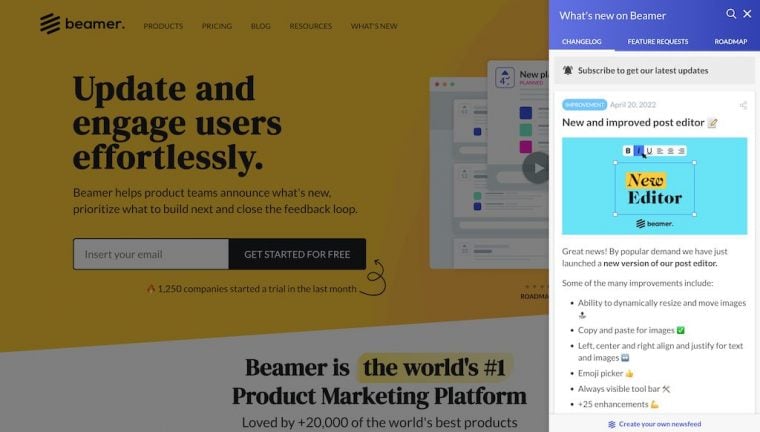
Key Features:
- AI-powered changelog creation
- User segmentation
- Push, in-app, and email channels
- Boosted announcements
- Comments & reactions
- Custom branding
Best For: Startups focusing on engagement metrics.
Pricing: Free plan, Pro from $49/mo
7. LaunchNotes
Overview: Enterprise-grade update distribution & analytics.
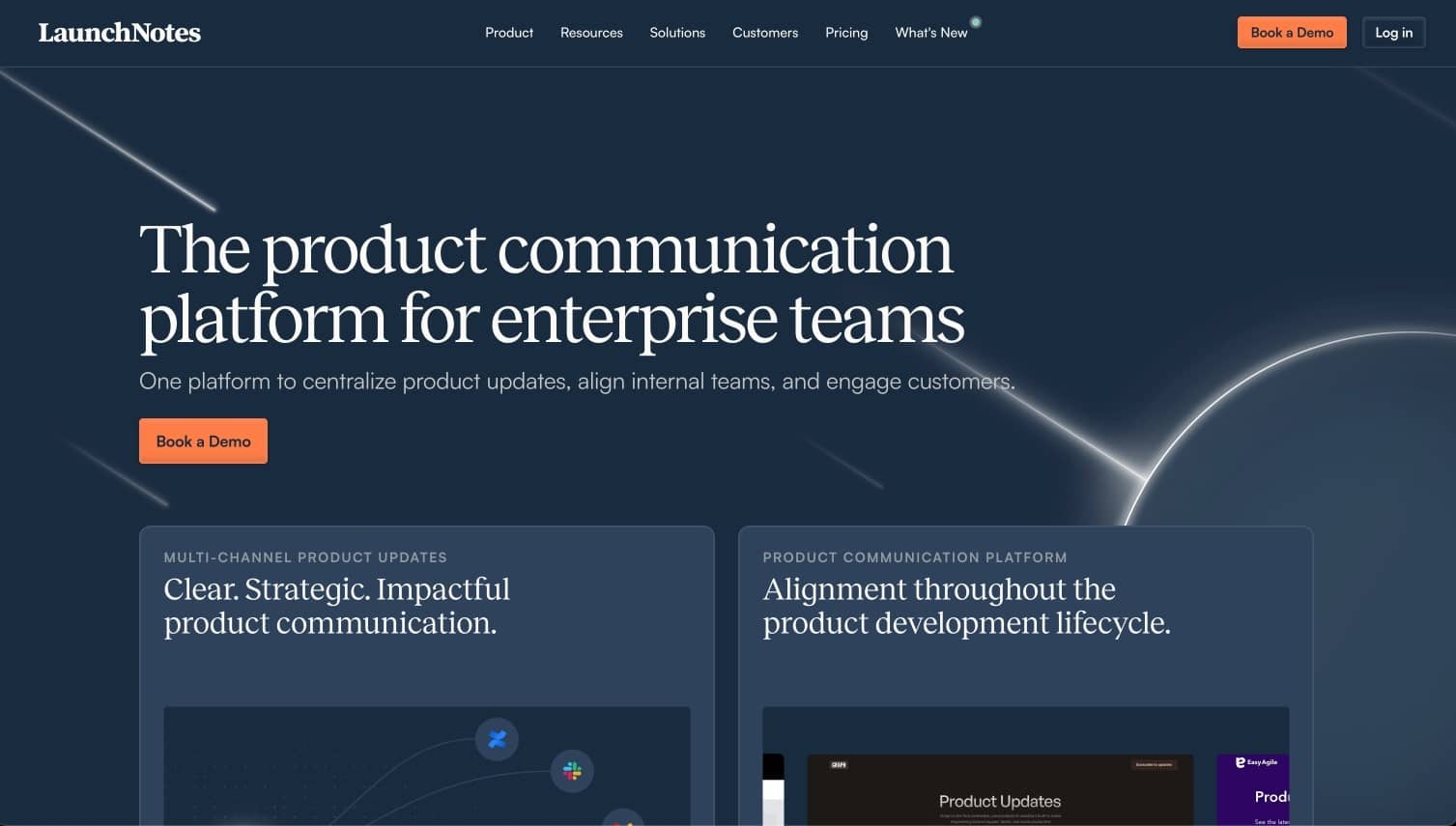
Key Features:
- Email, Slack, Teams publishing
- Sentiment & engagement analytics
- Jira, Confluence, Loom integrations
- AI writing assistance
- Pixel-perfect branding
- Advanced segmentation
Best For: Large organizations with complex comms needs.
Pricing: Custom
8. AnnounceKit
Overview: No-code interactive changelog builder.
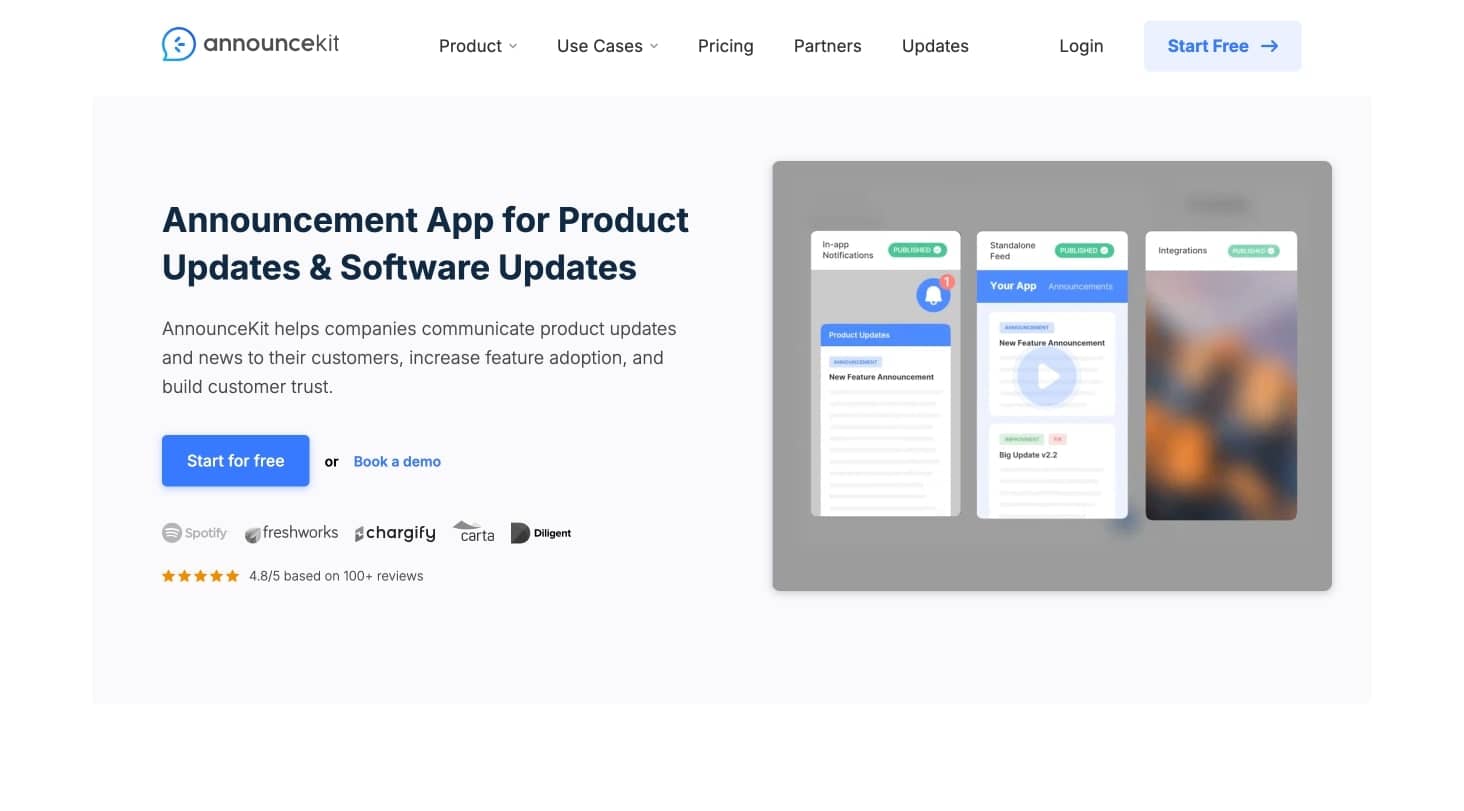
Key Features:
- Rich media changelog
- User segmentation & privacy controls
- Multi-language support
- Custom domains
- Engagement analytics
- Email & social integrations
Best For: Teams needing quick setup with strong visuals.
Pricing: Free plan, from $15/mo
9. UserGuiding
Overview: Combines changelogs with onboarding flows.
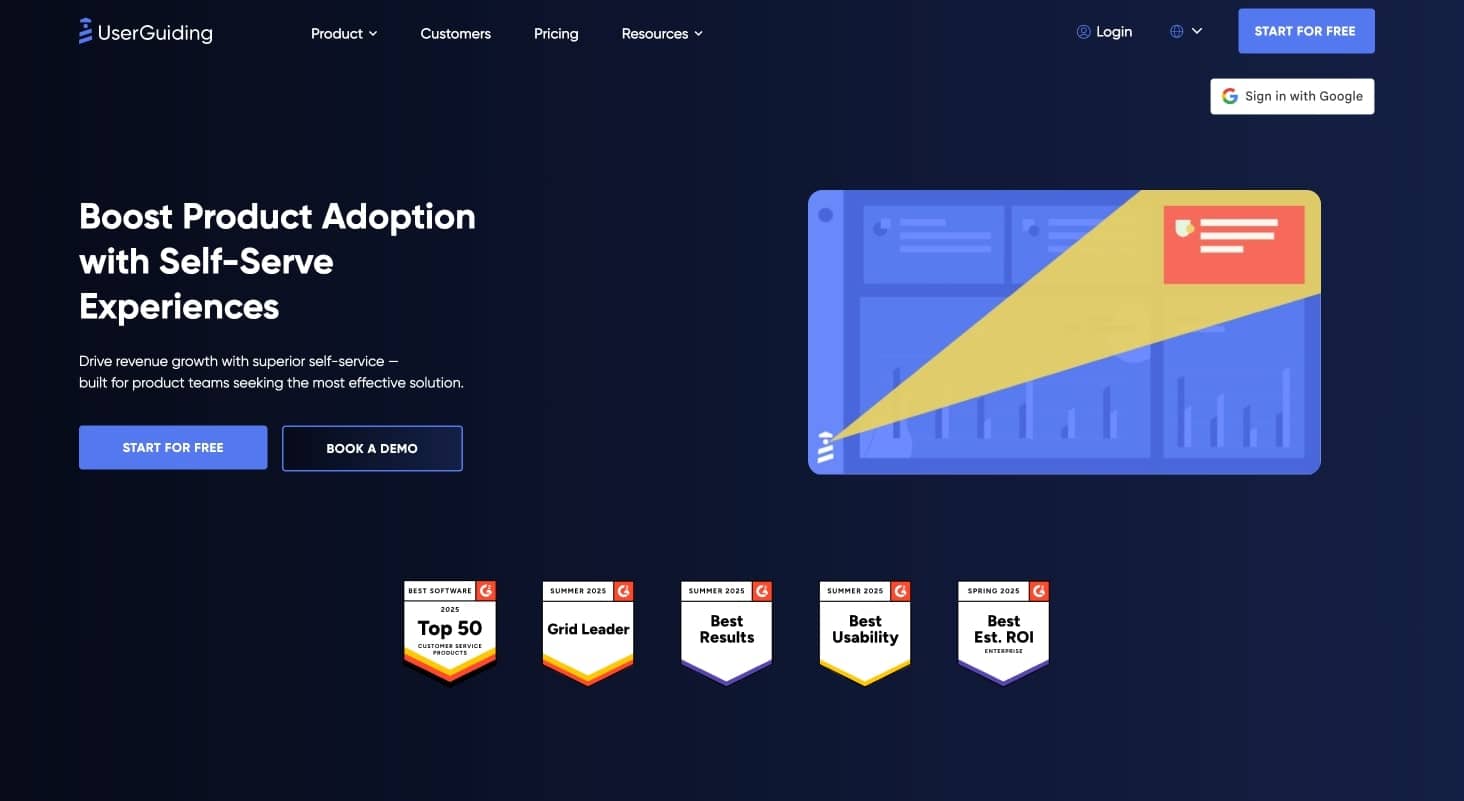
Key Features:
- Standalone & widget changelogs
- UI indicators for new features
- Interactive in-app tours
- Emoji reactions & comments
- Custom themes
- Resource center integration
Best For: Teams aligning updates with adoption flows.
Pricing: Free plan, from $39/mo
10. Headway
Overview: Simple, affordable public changelog.
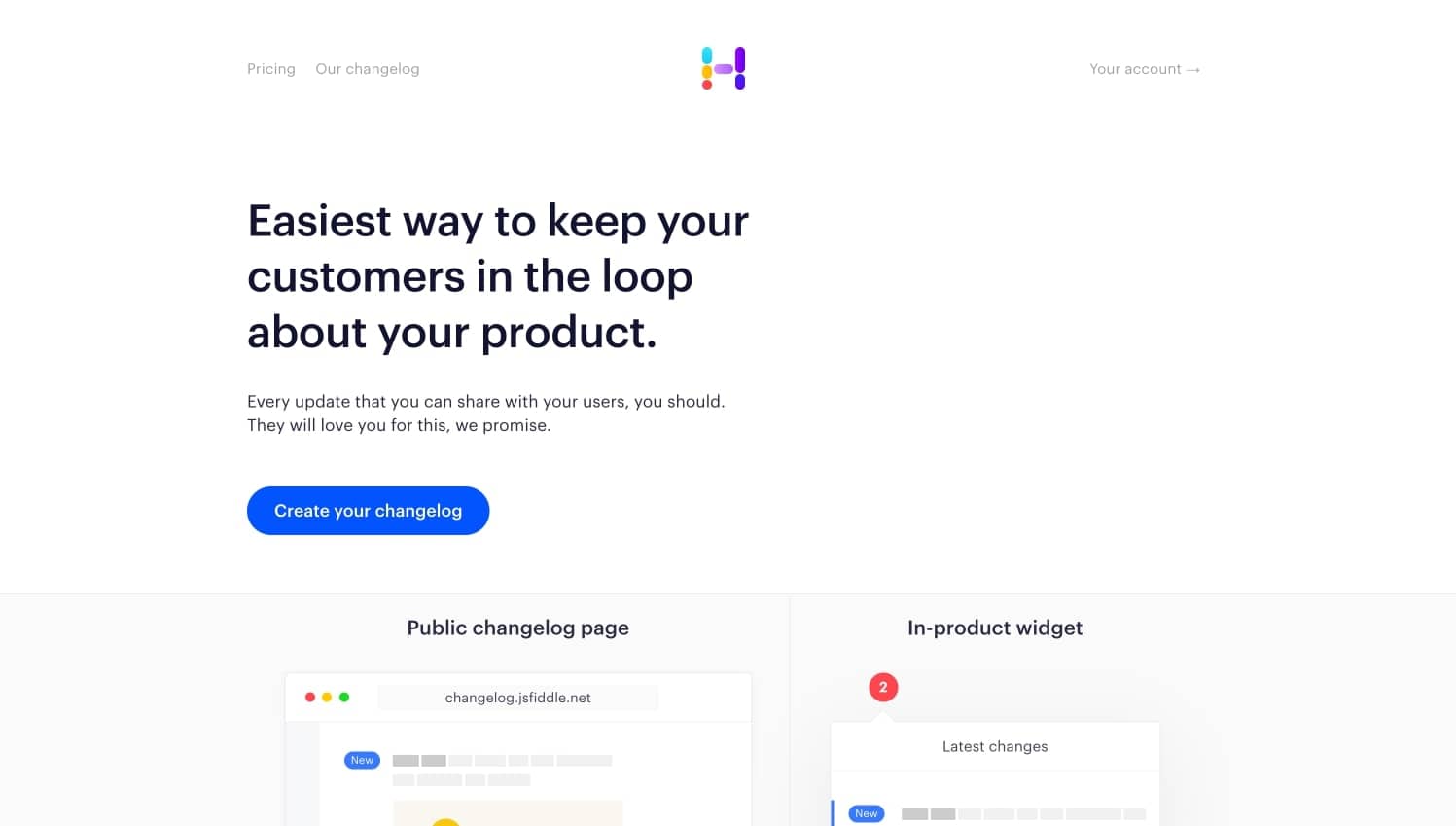
Key Features:
- Public page & in-app widget
- Branding & domain hosting
- Scheduled publishing
- Slack & Twitter integration
- Markdown support
- Basic analytics
Best For: Small teams with simple needs.
Pricing: Free plan, Pro $29/mo
Comparison Table
| Tool | Key Strengths | Best For | Starting Price | Unique Features |
|---|---|---|---|---|
| Userorbit | All-in-one, AI-powered | Product-led teams | Free | AI changelog, user journeys |
| ReleaseNotes.io | Smart automation | Changelog-only teams | Free | Dev-activity automation |
| ProductLift | Integrated workflow | Product managers | $22/mo | Roadmap → changelog |
| Notion | Flexible, AI | Notion users | Free | GPT-5 templates |
| Canny | Feedback loop | Feedback-heavy teams | Free | Auto notifications |
| Beamer | Engagement focus | Startups | Free | Boosted announcements |
| LaunchNotes | Enterprise analytics | Large orgs | Custom | Sentiment tracking |
| AnnounceKit | Visual, no-code | Interactive teams | $15/mo | Multi-language |
| UserGuiding | Onboarding + updates | Adoption-focused teams | $39/mo | Guided tours |
| Headway | Simple & affordable | Small teams | Free | Scheduled publishing |
How to Choose the Right Tool
- Integration needs - Standalone changelog vs. full engagement suite
- Engagement level - Basic announcements vs. interactive updates
- Automation - Manual vs. AI-driven content creation
- Budget - Check free plan limits and scaling costs
- Ease of use - No-code vs. developer setup
FAQ
Q: What’s the difference between a changelog and release notes?
A changelog lists all changes (features, fixes, updates), while release notes are more user-focused summaries.
Q: What’s the best free changelog tool?
Userorbit, ReleaseNotes.io, Canny, and Headway all have free plans.
Q: How do I write an effective changelog?
Be concise, highlight benefits, and segment updates to relevant audiences.
Conclusion
The best changelog tools don’t just announce updates - they drive engagement and adoption.
- Choose Userorbit if you want an all-in-one engagement platform.
- Pick ReleaseNotes.io for focused changelog automation.
- Try ProductLift for integrated feedback-to-release workflows.
Whatever your choice, aim for a tool that fits your product strategy and growth stage.
Further Reading
- PLG Playbook - How to Personalize Onboarding to Double Feature Adoption
- Userorbit Tools and Features
Last updated September 11, 2025
